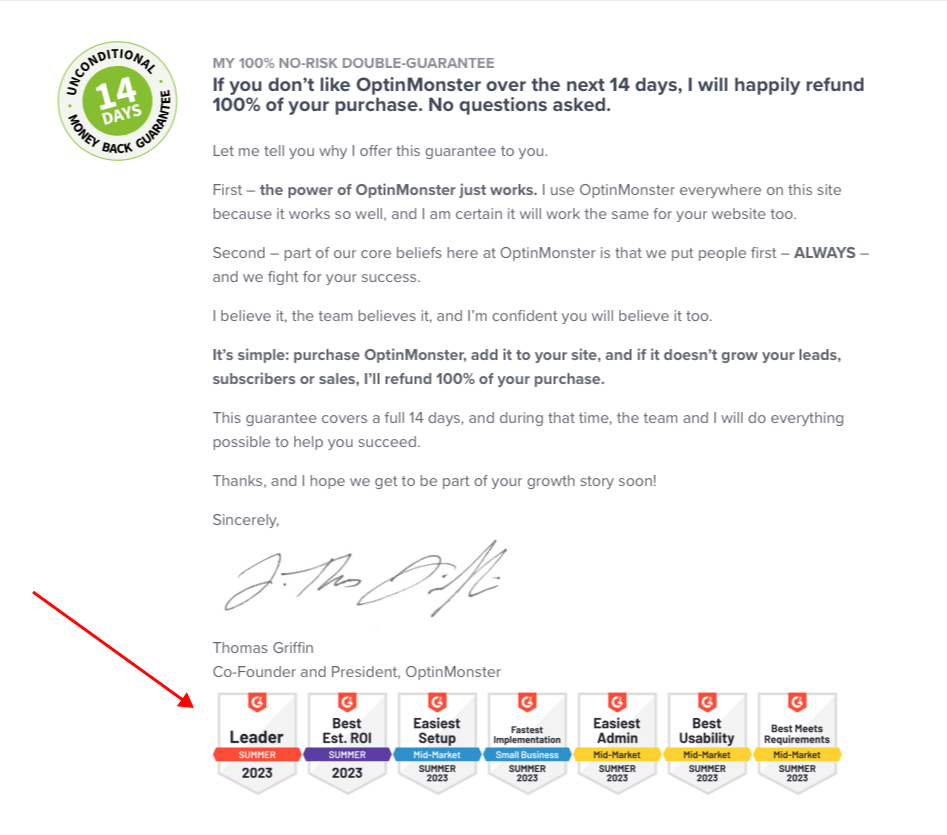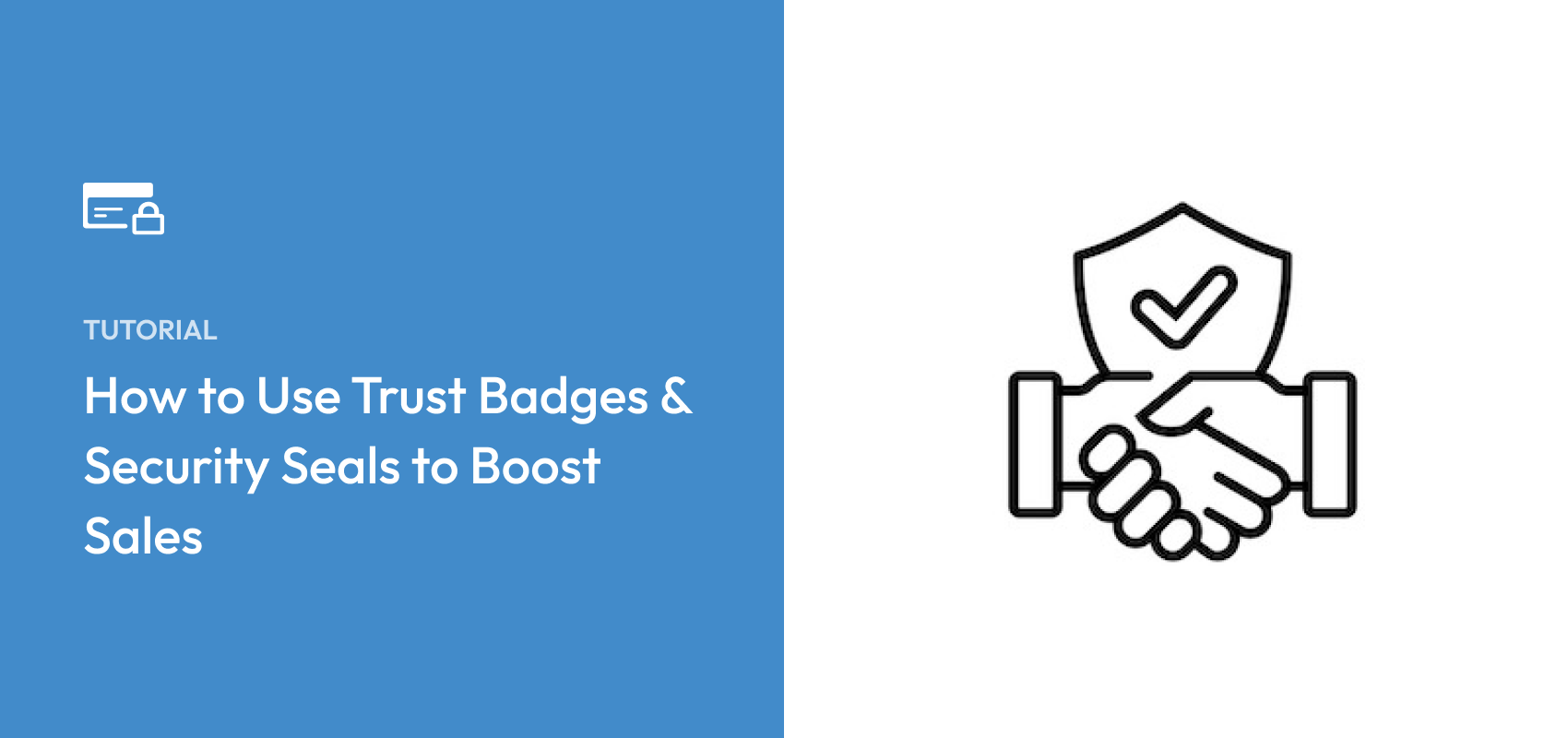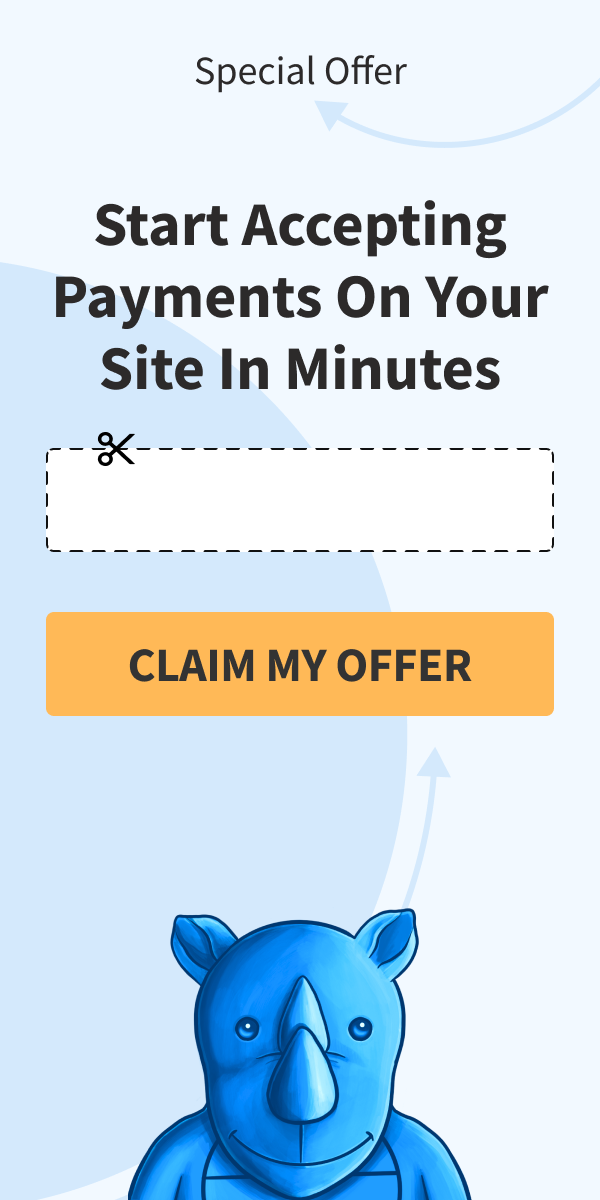How to Use Trust Badges & Security Seals to Boost Sales
Last updated on
Do you want to add trust badges and security seals to your WordPress site?
For new businesses, establishing and maintaining trustworthiness can be challenging at first. Luckily, trust badges and security seals can be used to build trust in your site and your products or services.
Additionally, trust badges and security seals are a tried and true way to boost customer confidence and ultimately increase conversions. The best part? They’re both easy and cost-effective to implement.
In this article, we’ll explore some of the different types of trust badges and security seals and the best ways to add them to your site.
Table of Contents
What are Trust Badges?
Trust badges, also referred to as trustmarks, are symbols or graphics that help your visitors feel more comfortable about using your site and making a purchase. They elevate your status, boost your credibility, and make your site seem legitimate.
Trust badges work by associating your brand with other reputable companies. It’s similar to having a popular person introduce you at the party. Effective trust badges can be anything as long as your users understand them and they add credibility to your brand.
Here are some of the most common trust badges you’ve probably seen before:

Trust badges aren’t just pretty. They have a significant impact on your customers’ behavior.
As part of a recent study conducted by the Baymard Institute, 4,000 U.S. adults were asked why they abandoned a purchase during checkout. Nearly 1 in five responded that they “didn’t trust the site with their credit card information.”
This is where trust badges and security seals can help. Essentially, a trust badge’s influence on customers depends on whether they recognize it. If they don’t know what the trust badge means or don’t find it credible, it won’t influence their purchasing decision. In fact, irrelevant or untrustworthy trust badges can actually damage your conversion rate by aligning you with an unsavory brand.
For example, if you use Stripe as a payment processor, it makes sense to include the Stripe logo somewhere during the checkout process. This will help a shopper trust that their sensitive financial information is safe with you.

The Different Types of Trust Badges
Payment processor logos aren’t the only way to incorporate trust badges on your site. There are several different types of trust badges, each with its own purpose.
1. Credit Card Logos
Credit card logos serve two purposes. First, they inform your customers of the types of payments you accept. Second, they associate your brand with big, well-trusted financial institutions your customers work with regularly.
2. Awards and Honors
Awards are a great way to show that your product or brand is well-known and respected. They also assure customers that it’s better to buy from you than the competition because you have earned the award.
Take a look at how OptinMonster features its awards on the pricing page:

3. Logos of Customers, Clients, or Partners
By publicly associating yourself with other brands you work with, you can leverage any goodwill they’ve created with your customer base. If you work with a well-liked company, you should brag about it!
A lot of companies do this by simply displaying a row of partner logos across their home page:

These are easy badges to add to your site because you don’t have to win an award, use a specific service, or comply with regulations. You just need the company’s permission to display their logo.
When choosing logos to add to your site, be sure your customer knows of them. You may do a lot of business with a big brand, but if your customer has never heard of it, it won’t add any credibility or help them make a purchasing decision. You only build trust when they recognize the logo.
4. Customer Satisfaction Badges
A customer satisfaction badge gives your customers an important piece of information to nudge them toward converting. They instill confidence by resolving one of your customer’s fears.

You’ve probably seen badges that say things like this:
- “Money-back guarantee”
- “100% satisfaction guarantee”
- “Lifetime warranty”
- “Integrates with your other tools”
- “Works with all types of [relevant products]”
- “Free shipping”
- “Quality materials”
5. Security Seals
Security seals are trust badges verifying that your website is safe for customers to input sensitive information. These types of badges are especially important for sites that process online transactions.
The most common security seal is the lock icon next to your site’s URL in your customer’s browser. You get this by adding an SSL certificate to your website.

There are other types of security seals, as well. For example, this Salesforce landing page includes Norton and TRUSTe badges to let subscribers know their data is private and safe.

6. App Store Logos/Buttons
App store badges are unique trust badges. They tell your customers a few things:
- The brand is accessible in several ways.
- The brand has been vetted by big companies like Apple and Google.
- The brand is healthy because it can afford to invest in app development.
- If the customer is unhappy, the app stores might provide a remedy.
Generally, you wouldn’t include app store logos during the checkout process. Your shoppers might click them to download your app and never complete their purchase. But it’s smart to include them in an accessible place on your website, like the footer.

Trust Badge Placements
There are hundreds of different types of trust badges you can add to your site, but you shouldn’t include them all. It’s important to add the ones that have the greatest impact on your customers.
Placing your trust badges in the right locations is just as important as having them. There isn’t much point to them if your visitors can’t see them.
Customers generally don’t go looking for trust badges, so it’s best to put them in places they can’t miss or near points where you want them to input information or make a decision.
Be sure to match the trust badge to the action you want them to take. For example, if you want your visitor to sign up for a demonstration, placing financial-type trust badges near the form wouldn’t make sense because the user isn’t making a purchasing decision. In this case, it would be smarter to put logos of your partners or customers or perhaps a “No obligation” customer satisfaction badge.
The header can be a good spot for trust badges if they’re important to the customer’s buying process. For example, you might put a “Google Partner” logo in your header if your customers are looking for products that work well with Google products. Limit your site to one or two trust badges in the header, or you risk cluttering the page.
Key Takeaway
Trust badges are important for every site, but they’re critical for sites that accept payments, whether you have a full line of eCommerce products or process simple one-time transactions. They make your customers comfortable making a purchase, which leads to more sales.
That’s it! If you liked this article, you might also want to check out our guides on How to Add SSL/HTTPS in WordPress and How to Automate Social Proof Posts on Facebook Pages.
What are you waiting for? Get started with WP Simple Pay today!
To read more articles like this, follow us on X.
Disclosure: Our content is reader-supported. This means if you click on some of our links, then we may earn a commission. We only recommend products that we believe will add value to our readers.


